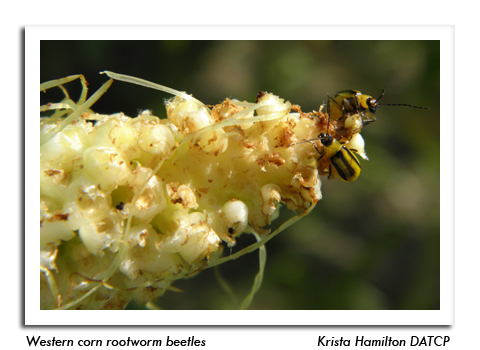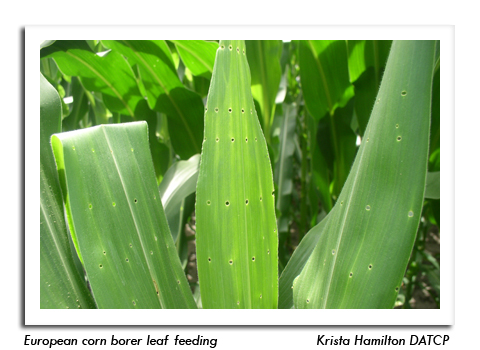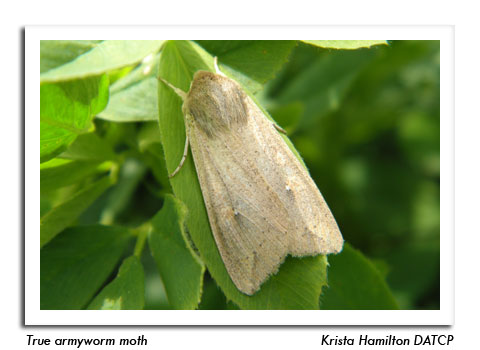
 |
|
|
Corn
Volume 63 Number 10 Date 07/05/2018 CORN ROOTWORM - Beetle emergence is beginning in southwestern Wisconsin. These insects will become increasingly abundant throughout July, with peak emergence anticipated around mid-August. Last year's historically low beetle counts indicate that overall beetle pressure could be down this season, although individual fields with root damage should still be expected. The 2017 state average of 0.2 beetle per plant was the lowest in 47 years of annual surveys. EUROPEAN CORN BORER - Larval infestation rates are generally less than 10% in surveyed fields. Corn borer caterpillars range in development from second to fifth instar, with the third instar being the most prevalent stage. Approximately 20% of the cornfields sampled from June 28-July 4 had signs of ECB infestation. STALK BORER - Surveys of V9- VT corn found infestation rates of 1-11%, with the highest population noted in Dane County. Treatment is no longer an option for many southern and western Wisconsin fields since the larvae have bored into the stalks and unemerged tassels. Treatments must be applied from 1,400-1,700 degree days (base 41°F), or prior to the V7 stage. Stalk borer feeding is unlikely to kill individual corn plants beyond V7. TRUE ARMYWORM - The significant flight of 309 moths reported from Janesville during the previous two weeks declined to 35 this week, but continued scouting of corn and wheat is recommended. Small larvae ranging from ¼-½ inch are appearing in alfalfa sweep net collections and localized armyworm problems often develop in at least a few scattered corn and wheat fields in July. -- Krista Hamilton, DATCP Entomologist 




|
|
|